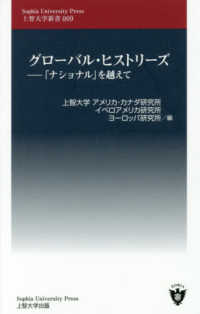Full Description
European courts have an important role to play in contributing to the legitimacy of EU environmental governance. Their role in holding to account and scrutinizing administrative and legislative acts is critical to the overall legitimacy of the political system. However, the boundaries of legitimacy in governance are themselves being shaped by the environmental context. This volume explores how the environment affects the ways in which the courts can support the legitimacy of EU governance, and, in turn, what the courts themselves bring to the table in enhancing that legitimacy.
The Legitimacy of EU Environmental Governance and the Role of the European Courts considers soft law, human rights, the environmental principles, judicial procedures and remedies, and the wider European law context, to examine the dynamics which shape the courts' contributions to legitimacy.
Bringing together leading authors in EU constitutional and administrative law and EU environmental law, this book explores the ways in which environmental degradation is shifting how the courts, and we, assess what legitimate governance actually consists of.
Contents
1: Mariolina Eliantonio, Michal Krajewski, and Emma Lees: Legitimacy: What's in a Name?
2: Mariolina Eliantonio and Danai Petropoulou Ionescu: Walking the Tightrope: Legitimacy and the Use of Environmental Soft Law in the European Courts
3: Emma Lees: Environmental Principles and Legitimacy: Power-Allocation, Knowledge Gaps, and Coherence
4: Nicolas de Sadeleer: Environmental Protection in a Free Market: Member States' Room for Manoeuvre
5: Gerd Winter: Fundamental Rights to Climate Protection in Europe: Can the Judiciary Leverage the Legitimacy of Environmental Governance?
6: George Iordachescu and Michal Krajewski: Scientific Uncertainty before the EU Courts, Boards of Appeal, and National Courts in Environmental Matters
7: Luca Prete: EU Environmental Law: A Complete and Effective System of Remedies before the Courts of the European Union?
8: Mariolina Eliantonio and Emma Lees: Conclusions







